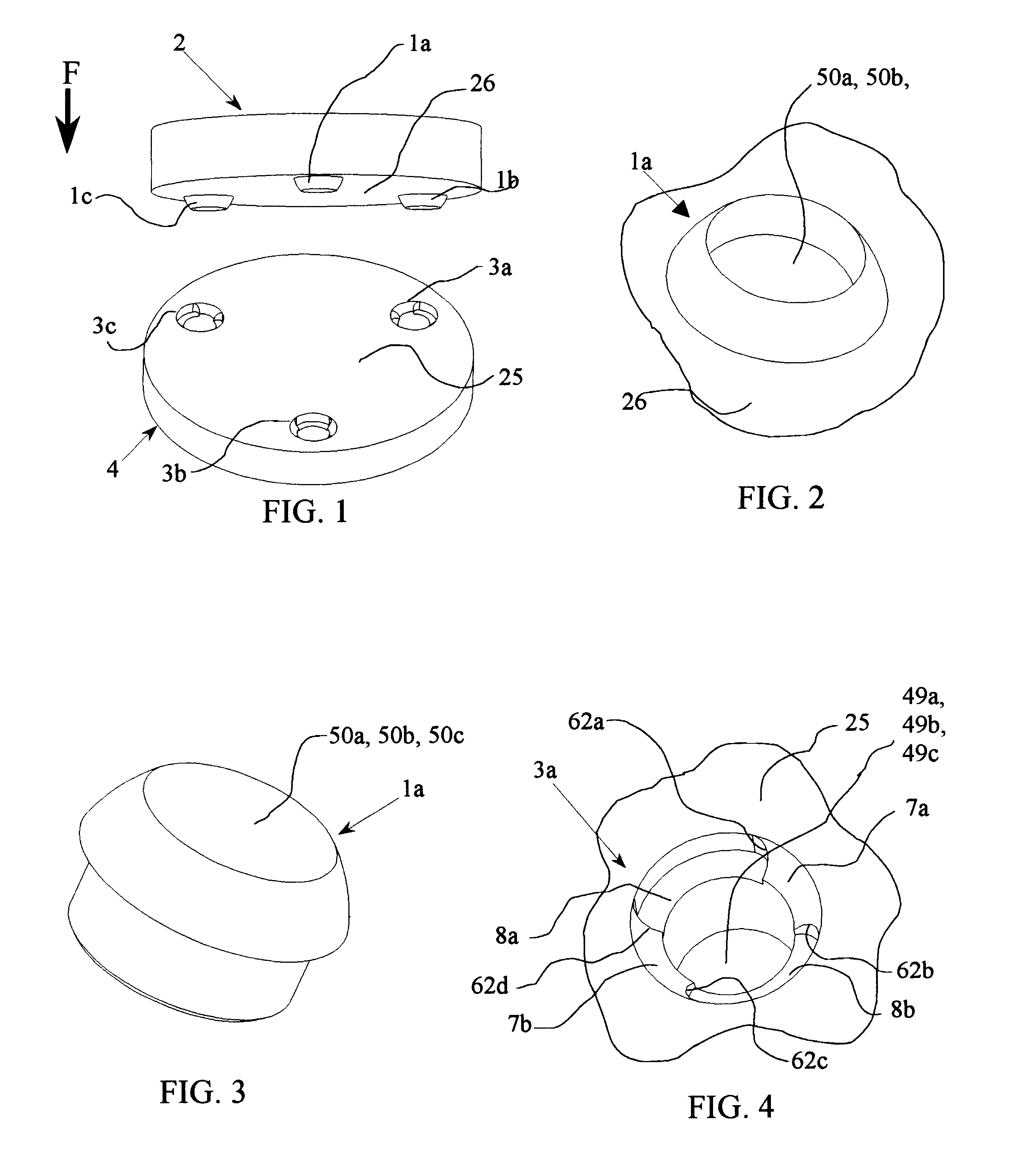Quasi-kinematic coupling and method for use in assembling and locating mechanical components and the like
a technology of kinematic coupling and mechanical components, which is applied in the direction of rod connection, mechanical control devices, instruments, etc., can solve the problems of pushing the performance requirements beyond the approximately ten micron repeatability limits of such techniques, not well-suited to precision assembly applications, and couplings are not ideally suited for use in high-volume manufacturing and assembly processes, and achieves low cost
- Summary
- Abstract
- Description
- Claims
- Application Information
AI Technical Summary
Benefits of technology
Problems solved by technology
Method used
Image
Examples
Embodiment Construction
FIG. 1 shows the open coupling 2-4 of the invention in its generic form. The coupling consists of three spaced conical grooves 3a, 3b, and 3c attached to or machined into the inner surface 25 of the first (lower) component 4, and three corresponding spherical peg or protruding elements 1a, 1b, and 1c attached or machined into the opposing or inner surface 26 of the second (upper) component 2, FIGS. 1 and 2. When such a coupling is initially mated, each spherical protrusion element 1a, 1b, and 1c contacts its corresponding conical groove 3a, 3b, and 3c, and surfaces 25 and 26 will be parallel and separated by a small gap.
This contact takes place on seats of the conical grooves, as shown at 7a and 7b for the illustrative groove 3a, in FIG. 4 and FIG. 7. The contact can be modeled as along lines 17a and 17b, FIG. 7, since the surfaces of the spherical elements 1a, 1b, and 1c and the surfaces of the conical grooves 3a, 3b, and 3c are surfaces of revolution. With each conical groove 3a, ...
PUM
 Login to View More
Login to View More Abstract
Description
Claims
Application Information
 Login to View More
Login to View More - R&D
- Intellectual Property
- Life Sciences
- Materials
- Tech Scout
- Unparalleled Data Quality
- Higher Quality Content
- 60% Fewer Hallucinations
Browse by: Latest US Patents, China's latest patents, Technical Efficacy Thesaurus, Application Domain, Technology Topic, Popular Technical Reports.
© 2025 PatSnap. All rights reserved.Legal|Privacy policy|Modern Slavery Act Transparency Statement|Sitemap|About US| Contact US: help@patsnap.com



